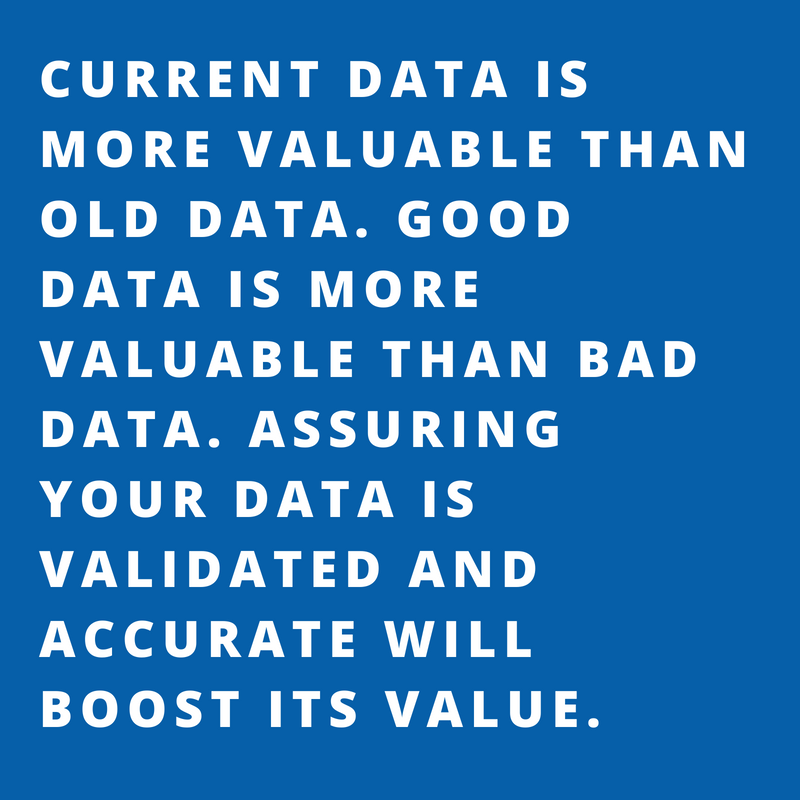By T.J. Miller, Governor at Large, Generation Next
SuperSprings International, Inc.
This article was originally published in the July 2018 issue of Generation Next Edition.
 Every upfitter, manufacturer and reseller in the work truck industry collects data. Surely, every business that exists on the planet collects data. If you have a customer and know that customer’s name, you collect data. Think about everything you already collect: contact information, sales history, vendor scorecards, inventory quantities, vehicle specifications, website analytics, and more. Think about the granular data you are not collecting – the data you never knew existed until reading articles about Cambridge Analytica during Brexit, the 2016 election, and Facebook’s 2018 data investigation.
Every upfitter, manufacturer and reseller in the work truck industry collects data. Surely, every business that exists on the planet collects data. If you have a customer and know that customer’s name, you collect data. Think about everything you already collect: contact information, sales history, vendor scorecards, inventory quantities, vehicle specifications, website analytics, and more. Think about the granular data you are not collecting – the data you never knew existed until reading articles about Cambridge Analytica during Brexit, the 2016 election, and Facebook’s 2018 data investigation.
Not all data is created equal. Particularly, when we are looking to assign a value to it. Think about it. If you collected fax numbers in 1983, how valuable are those numbers today compared to e-mail addresses? Current data is more valuable than old data. Good data is more valuable than bad data. Assuring your data is validated and accurate will boost its value.
This article is not intended to educate you on the googol fragments of data that exist, nor new regulations such as the General Data Protection Regulation (GDPR). This is not an in-depth look at how/if artificial intelligence and quantum computing will/may influence our industry by scouring, reviewing, interpreting and acting on more data than our brains will ever be able to comprehend.
Rather, this article is to highlight how we can utilize our data to increase revenue and recognize value. My aim is to provoke some thought: to encourage better data-driven decisions, balanced with instinct and industry expertise. For the short read, here are the three bullet points to take home:
- Data without action is stale, useless, of no value
- Acting on data using inappropriate dimensions and/or segments is dangerous
- Driving your decisions with valuable and accurate data is powerful
When evaluating your data, general and non-specific equals not very valuable. Do the results vary by customer segment, equipment installed, intended application, etc.? As a marketing technologist, I hear a lot of online boasting, such as, “I had a million visitors on my website!” This is useless information to any half-decent online marketer or strategist. How many of those users are bots not filtered out of your analytics? Where did those users come from? What page did they land on? How many pages did those users view? How long did they stay on a page? Why did they leave? What was the result of their visit? What value did their visit bring to your business?
These are the basic questions of any decent web designer, online marketer, or strategist. These questions result in answers that are more specific. The general data, the boasting, is useless. The specific data is valuable.
Using the same web visitor example, now apply a segment. Instead of looking at every visitor, look specifically at visitors who have completed a contact form, clicked on a telephone link, or made a purchase. If you want to design a web form that gets more submissions, don’t look at the analytics for every user. Look at a segment of users who completed the form. What was similar? What was different? What was an obstacle? What was the quickest path to conversion? Now, those specific answers are magnified. The value of that specific data has increased. Your decision-making and strategy are more effective, your conversion rate increases, your revenue rises.
You can apply these same online principles into your business strategy. Use an appropriate filter and add a dimension, rather than looking at everything through the same lens. If you sell umbrellas and your sales in Los Angeles are 100 umbrellas while your sales in Portland are 150 umbrellas, you may think Portland is outperforming Los Angeles. However, when you add a dimension – rainfall – you will quickly see a different picture. Average rainfall in Portland (36.69 inches) is 146% greater than in Los Angeles (14.93 inches).
Why are umbrella sales only 50% greater, when a leading metric/factor to buy an umbrella – rainfall – is 146% greater? Portland may have more sales, but it is underperforming compared to Los Angeles when viewed through the rainfall lens. Check another lens; what do you see now? Yes, this is a silly example, simplifying our industry and business, but the principle remains true.
Whether you’re considering a suspension enhancement, choosing a chassis for a unique application, or selecting fleet management software, do not make a decision without supporting data. Make sure to use specific data, viewed through different lenses using diverse dimensions, without focusing too much on the macro metric.
Take advantage of NTEA’s data experts and attend educational sessions at The Work Truck Show®, for example, to learn how industry professionals are making their data more valuable, growing revenue with data-driven strategic decisions that in turn make their businesses more valuable.